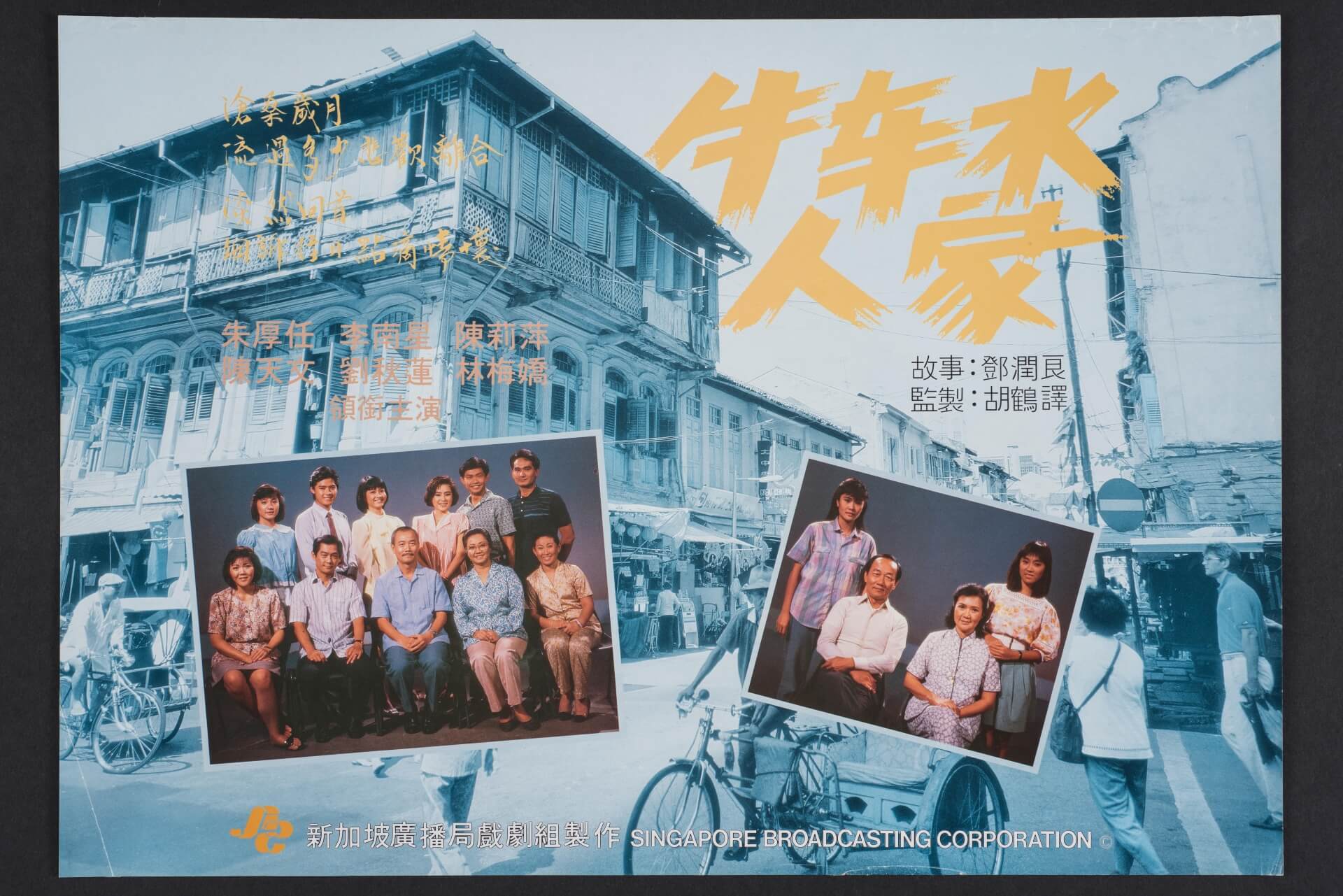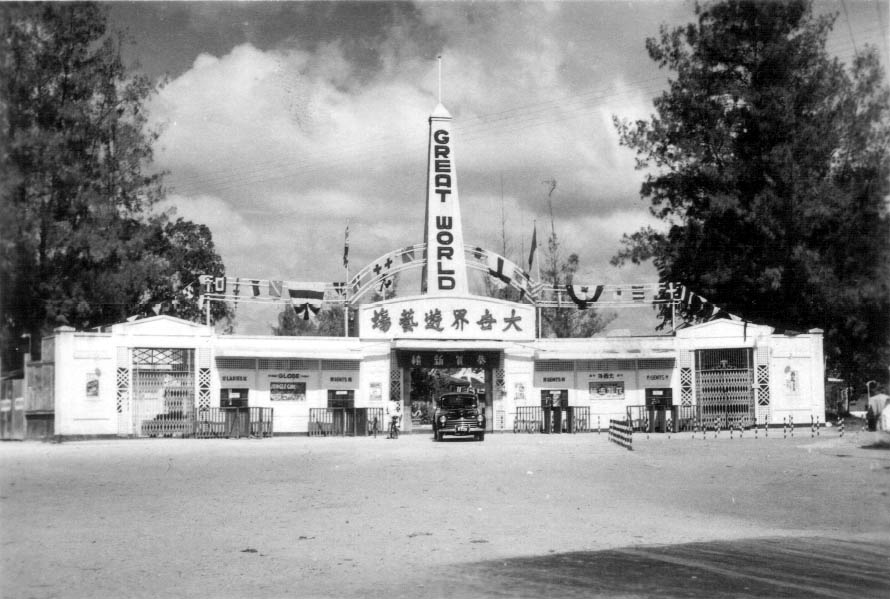政府广播电视台时期的华语自制节目(1963-1980)
新加坡最早的两个电视频道“第五波道”和“第八波道”先后在1963年的4月和11月定时播出。电视台早期的两个频道都播放四大官方语言的节目。1节目依语言分配为马来语20%,华语(包括方言节目)35%,英语35%和淡米尔语10%。21973年调整为第五波道播放英语、马来语,第八波道则是华语、淡米色尔语节目。作为社会公器,电视台透过频道对语言节目的安排,凸显了新加坡作为一个多元语言和种族国家的事实。
华语电视剧
1963年7月17日,第五波道在晚间9点35分播出由新加坡电视剧社在当天下午所预录的三幕剧《黄金万两》3,节目时长约一个半小时。这是新加坡制作的第一部华语电视戏剧节目。本地华语电视剧在1968年9月18日再次突破。第八波道从那晚开始,一连四个星期三播出电视剧《父母心》,这是电视台“一次根据电视剧的手法与技巧拍摄的尝试”。41969年10月推出第一套以组屋生活为背景的单元剧集《千家万户》5,1971年底又推出以本地生活为题材的电视单元剧集《戏剧人生》。6电视台在1974年5月在《戏剧人生》的时段推出连续剧《河畔幽兰》,接着又在1976年3月推出第二套本地连续剧,10集的《五万元风波》。7


华语儿童电视剧
在发展电视剧的同时,电视台也自1973年开始推出华语儿童电视剧。8在1973年的《大明与小玲》9之后,陆续推出《小邻居》(1974)10、《好同学》(1974)11、《孩子们的故事》(1975)12、《同心协力》(1976)13、《家在大巴窑》(1977)14、《当我们都在一起》(1977)15和《温情满人间》(1978)16等。这其中,由陈建彬编剧、李明芬导播的26集《家在大巴窑》至今还不时被提起,成为不少1970年代成长国人的共同记忆。
华语电视辩论节目
除了华语戏剧节目外,自制华语节目还有两大亮点。一是为政府宣传国策的中央制作组从1968年开始推出的一系列华语电视辩论节目。这系列节目在本地华社掀起了约二十几年的辩论热潮。二是1960年代末推出以歌舞、谐剧为主的综艺节目,最为人乐道的是《花月良宵》和《声宝之夜》。这类节目让本地优秀的歌手和谐剧演员有机会在歌台或夜总会等场所之外,为更多的国人所认识,其中包括歌手林竹君、张小英、樱花和以方言表演,深受国人欢迎的谐星王沙(1925-1998)和野峰(1932-1995)。
电视台虽然制作了上述节目,但对自制节目所投入的资源是有限的。以戏剧节目为例,虽然电视台在1974年就以彩色播出,但电视剧始终是黑白的。在工作人员方面,除了导播和助导外,演员、编剧都是有心人士以业余的方式参与。本地第一代的电视演员就是这样产生的。他们有不少日后成为专业的电视人,其中包括陈澍承、云昌凑、李茵珠、陈建彬、向云和梁志强等。17
因此在这个时期针对华人社群的节目绝大部分是来自香港和台湾的电影或电视节目,这其中不乏粤语和厦语节目。1979年,作为政府部门的电视台响应“讲华语运动”,定下节目“完全不用方言”的时间表。18这个决定为新加坡接下来大力推动本地自制节目定下了语言的基调。
| 1 | “新加坡电视台”于自治政府时期的1963年4月2日由国家元首尤索夫依萨开幕。1964年1月,由于新马合并,改名为“马来西亚广播电视新加坡台”。1965新加坡独立后,又改为“新加坡广播电视台”(RTS),即新加坡文化部广播署。从1963年至1980年的这段期间,虽然历经自治、合并和独立这三个阶段,但电视台始终是隶属于国家文化部的单位。直到1980年改组为法定机构“新加坡广播局”后才不再是政府的一个部门。 |
| 2 | 〈向外宣扬广播事业,星电视台李淑珍小姐在女广播员会议席上介绍星电台电视现况〉,《南洋商报》,1966年6月26日。 |
| 3 | 〈黄金万两叁幕剧,今晚电视台播出〉,《星洲日报》1963年7月17日;〈关于电视台播出节目〉,《南洋商报》,1963年8月6日。 |
| 4 | 〈长篇电视剧《父母心》电视台订今晚起播出〉,《南洋商报》,1968年9月18日。 |
| 5 | 〈《千家万户》电视剧明年三月开始拍摄,编导团昨访问数区组屋体验住户生活广集资料〉,《南洋商报》,1968年12月3日;〈电视剧《千家万户》之一《水声笑影》今晚播出〉,《南洋商报》,1969年10月21日。 |
| 6 | 〈电视与广播第二二六期经已出版〉,《南洋商报》,1971年10月4日;〈《戏剧人生》,本地摄制电视剧,现实生活为题材〉,《星洲日报》,1974年12月15日。 |
| 7 | 〈新加坡电视台十年前的电视连续剧《五万元风波》〉,《联合早报》,1985年9月25日。 |
| 8 | 〈从儿童电视剧谈起〉,《星洲日报》,1976年8月1日。 |
| 9 | 〈电视节目时刻表〉,《南洋商报》,1973年11月23日。 |
| 10 | 〈新加坡电视节目〉,《南洋商报》,1974年5月31日。 |
| 11 | 〈电视与广播双週刊第叁○九期已出版〉,《南洋商报》,1974年12月9日。 |
| 12 | 〈电视台女导播昨披露儿童演员月杪亮相参加《孩子们的故事》演出〉,《南洋商报》,1975年9月28日。 |
| 13 | 〈电视台将制新儿童电视剧《同心协力》〉,《星洲日报》,1976年5月16日。 |
| 14 | 〈继《同心协力》之后李明芬导《家在大巴窑》第一集农历新年播映〉,《南洋商报》,1976年12月12日;〈《家在大巴窑》(第一集)〉,《南洋商报》,1977年2月20日。 |
| 15 | 〈《当我们都在一起》(第一集)〉,《南洋商报》,1977年11月13日。 |
| 16 | 〈电视台推出新儿童电视连续剧《温情满人间》,李明芬导播、李中利编剧,全剧廿六集已于5月28日拍竣,订本月十八日起逢星期天播出〉,《南洋商报》,1978年6月4日。 |
| 17 | 苏春兴,〈梁立人与江龙:带领华语戏剧攀高峰〉,收入郑裕通、朱亮亮等编,《回望加利谷山》,页223-231。 |
| 18 | 〈电视台希望在不久将来,节目完全不用方言〉,《南洋商报》,1979年9月15日。 |
郑裕通、朱亮亮等编,《回望加利谷山》。新加坡:八方文化创作室,2021。 |










